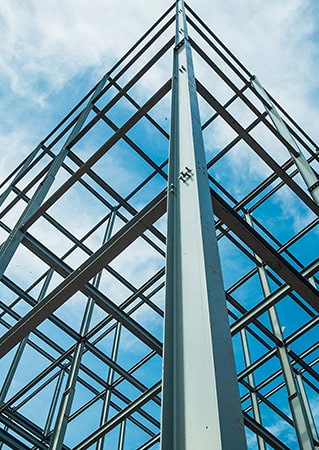
Continuous Walls
Giving New Definition to Walls System
Residential construction has gone many steps forward worldwide because of advanced technology application in the construction process. The introduction of continuous walls is one of the outcomes of that advancement in construction technology.
At SIDPL, one of the leading companies in the steel structure industry is transforming the way you think about construction. By the word “construction”, the only thing that comes to mind is a beautiful home at the cost of the environment. Most people believe that constructions create buildings by polluting the environment.
At SIDPL, we change the complete thought process by suggesting and delivering eco-friendly construction services to our clients. Going green is a new concept taking over the construction industry. According to this, green buildings are not about creating gardens on the roof or the walls but making a property green for the city environment.
As per studies conducted in the past, the green wall concept can change the picture of the construction industry in reality. It is a sustainable solution footing its legs throughout the world.
Continuous walls are one of the best examples of green walls that contribute to the beauty of both houses and the environment.
Let us know about the continuous walling system in detail!
Three Types of Light Gauge Steel External Wall System
● Infill Walls system
● Continuous Walls System
● Panelized Walls System
Infill Walls System
Under the infill walls system, wall panels use single material. Manufacturers cut them into specific shapes and sizes and set them up on the site. That is why it is also known as a stick-built wall system.
These wall panels come in between the different materials of the main structure.
Infill wall panels look like C-shape as their ends connect the underside of the bottom and upper floor.
We can say that these panels are vertical light gauge steel shaped as C sections.
Continuous Walls System
Also known as oversail walling, continuous walling acts as an external wall system for a house.
Continuous walls system uses the same element as in the infill walls system, but they differ in design and the building process.
How they fit in the main structure and length of vertical C sections makes them different.
For example, continuous walling requires long length steel studs as it covers multiple floors in a building.
Connection to Structure
In continuous walls-: an angular section attached with the primary structure holds loads from the front external-facing.
These angular sections are necessary to fix evenly throughout the building. It prevents the additional load on the bottom steel stud. Also, experts always recommend doing so.
The sections that link the continuous walls to the main structure give it lateral support only.
For other support, it is necessary to create bolt holes to permit other movements.
Appropriate Stud Splicing
If you want to install a panel safely, it is necessary to splice the stud in an appropriate length.
Keep in mind reliability of splices is the utmost thing to notice here. For better results, experts suggest that each stud splice independently.
Making of Doors and Windows Openings
In a continuous walls system, doors and windows openings follow the process involved in the infill walls system. It is significant to use thick steel to build hold up brackets because of heavy jambs, lintel beams, sill etc.
Conduct an execution to check the measurement of steel brackets to avoid any mistakes.
Panelized Walls System
This wall system uses pre-built light gauge steel structures that a manufacturer makes off-site. Later On, the manufacturer sends these structures to the actual site to get attached to the primary- structure.
So, these pre-built structures save time at construction sites. Workers need to pick the panel and attach them to the main structure. These panels come with the strength to bear the pressure of strong winds.
Only those companies can use light gauge steel external wall systems that hold knowledge of the installation process. In short, they must have the necessary competence for enjoying the benefit of the external wall system.
Training under an authorized manufacturer for an external wall system can help get the required competence.
Also, one can work as a subcontractor first and then join the construction industry as an actual constructor.
The builder uses the continuous walls system(a type of external wall system) for gapping among floors. The external wall system makes the front wall bear wind pressure.
Also, it gives support to other elements.
Building foundation and main steel structure give support to claddings.
Light steel external system may not offer vertical support to the cladding but can provide resistance against wind pressure.
If you want to get the best construction results following things are necessary:
● External wall system design
● Fire resistance
● Thermal insulation
● Sound insulation
● Best interfaces for doors, balconies and windows.
It applies to all types of external wall systems:
● Continuous walls
● Infill walls
● Penalized walls
Frequently Asked Questions
What is the role of a wall system?
Walls play a significant role in a building. They set up a balance between floor, roof and room ceilings. It helps in bordering a building to make it reliable and secure.
What are the different methods we can use for external wall system construction?
Here are the different method
● Masonry cladding: stone cladding, brick cladding, block cladding etc.
● Reinforced or concrete
● Wood.
● Metal wall cladding.
● Steel, wood or glass wall panels.
● GRPcladding
● GRC cladding
When was EIFS first introduced?
EIFS stands for Exterior Insulation and Finish System, and it came to the United States of America in the 1960s. First, they use it on commercial properties and next on residential buildings. It comprises elements like WRB that stands for water-resistive barrier.
What includes in Wall system components?
Whether continuous wallsor any other wall system, they usually consist of the following components.
